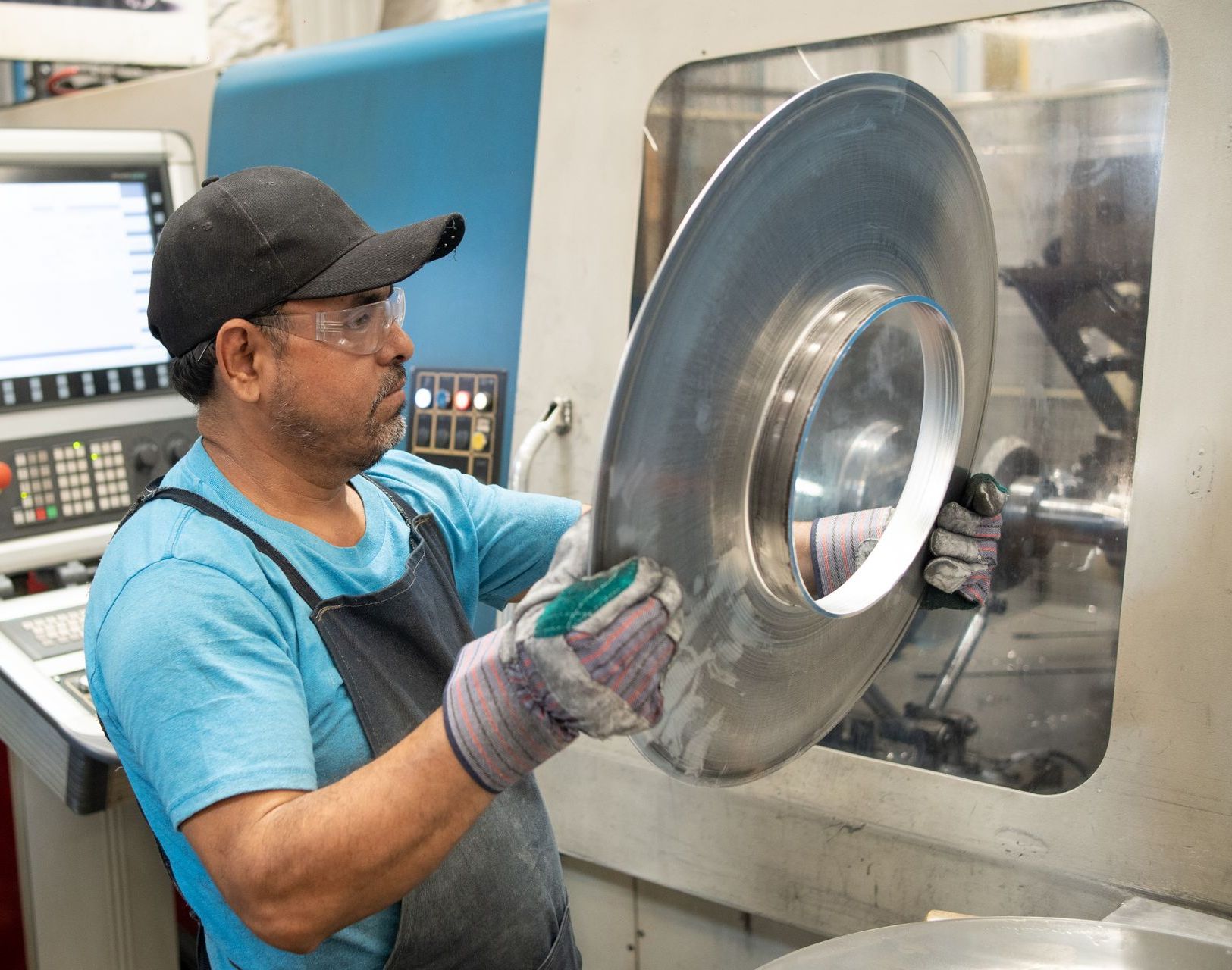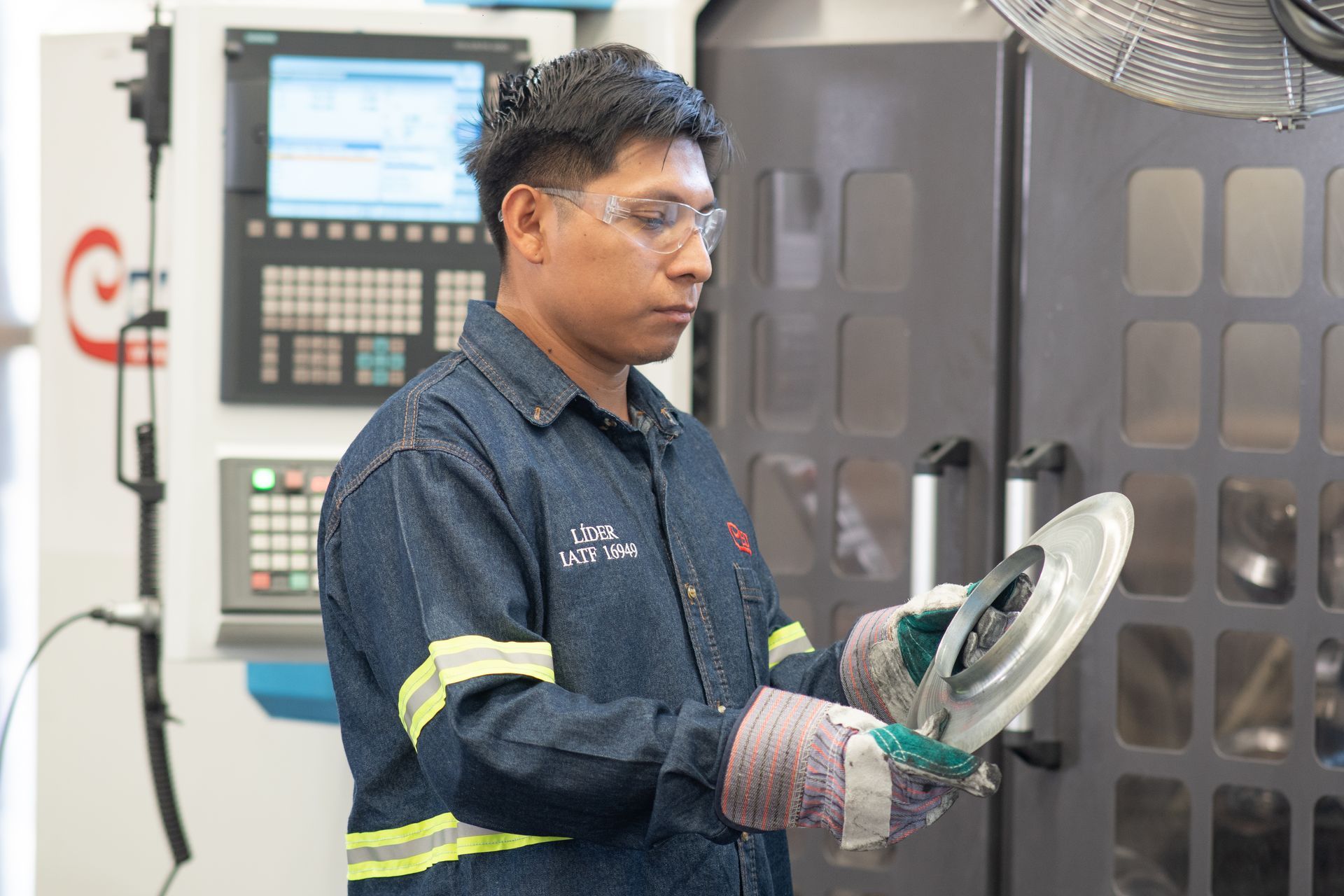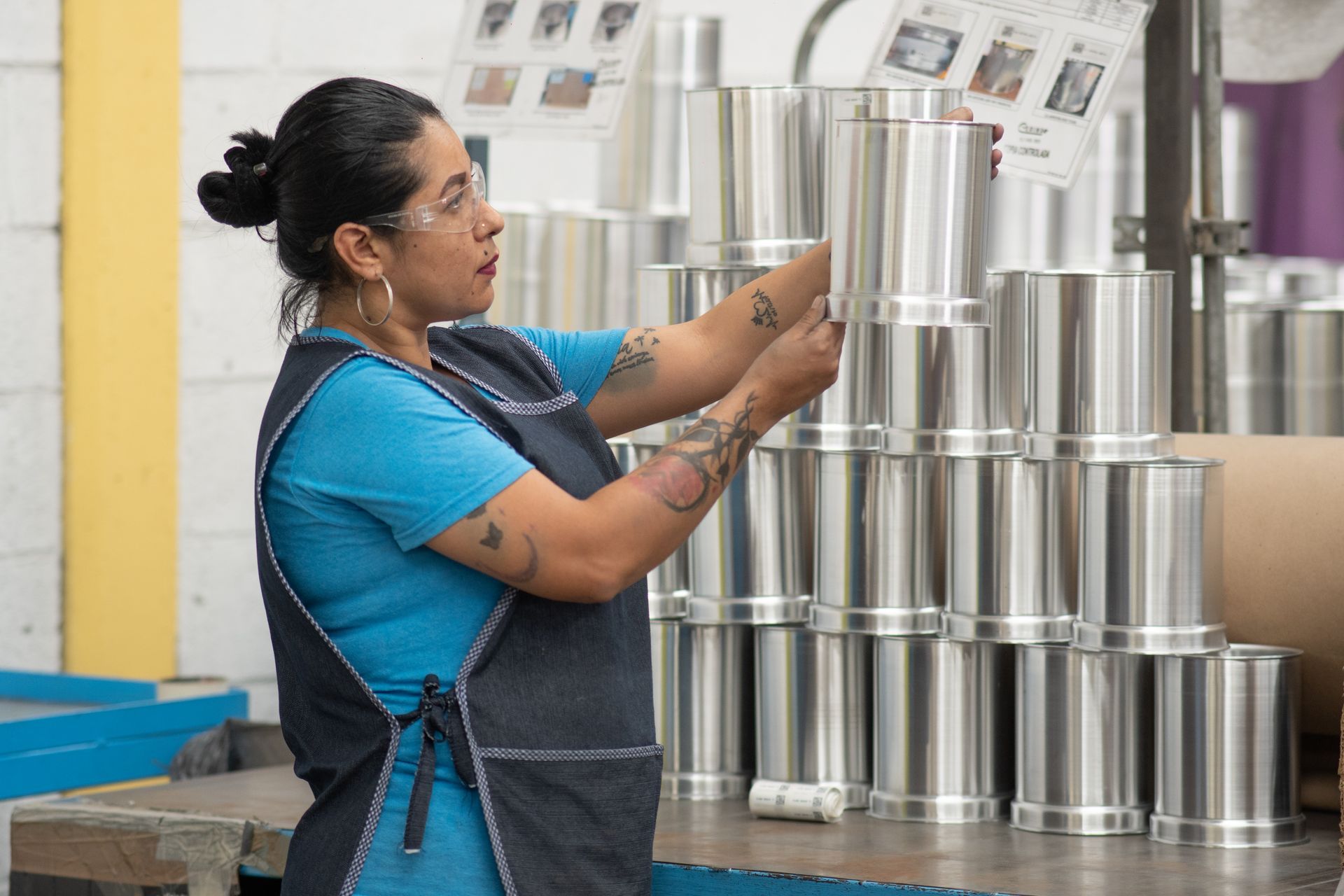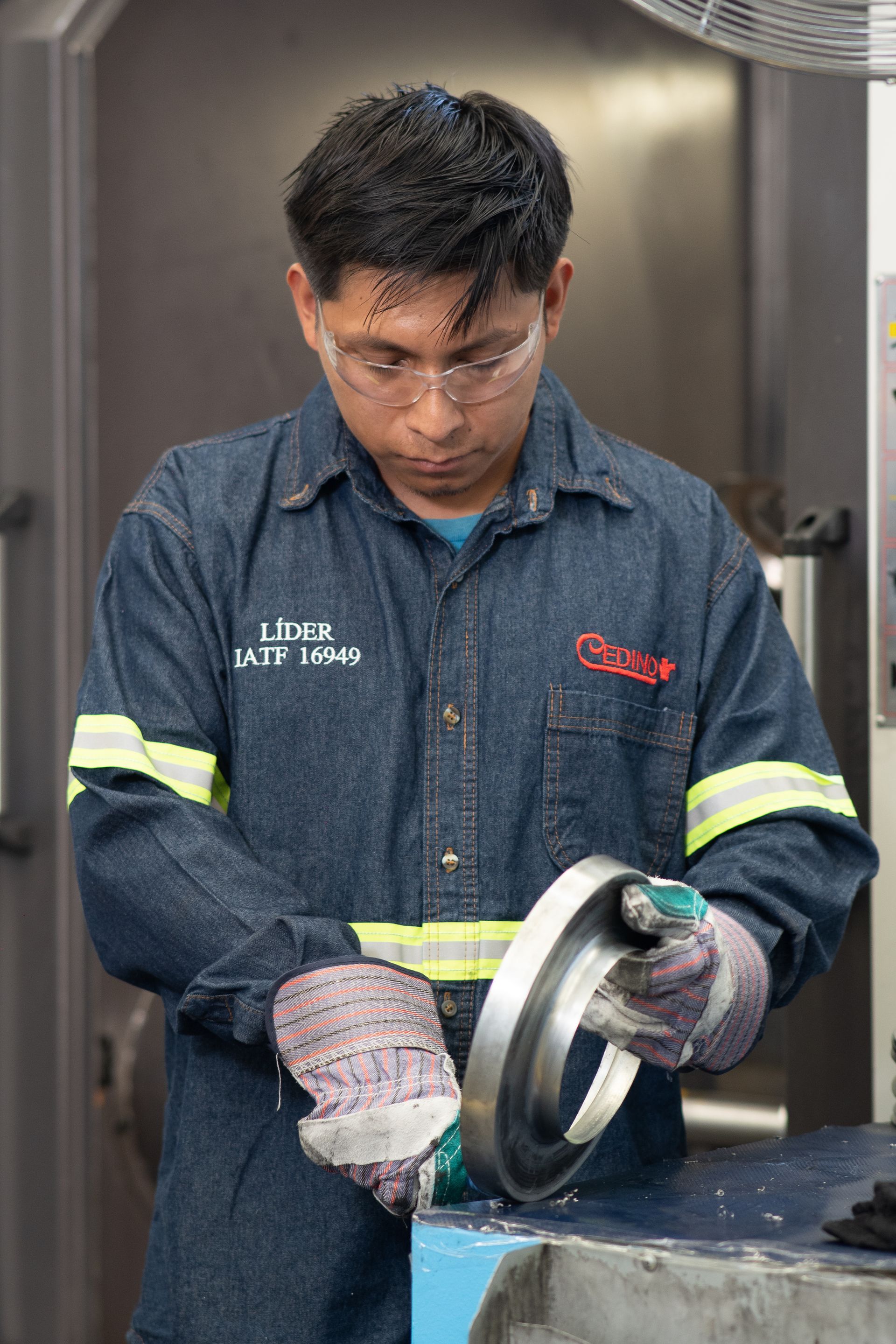Metal Spinning
Metal Spinning
Cedinor offer the process of CNC Metal spinning, hand made metal spinning and beading and trimming.
Our focus on metal spinning is ideal for parts requiring deep drawing, where the high cost of a die is not justified. Additionally, we have the ability to create special geometries through multiple molds or steps in the process. This means we can shape round, conical, hemispherical, cylindrical, parabolic, venturi, flange-type, plates, and much more.
At Cedinor, metal spinning is a precision art form that we carry out with state-of-the-art technology and a Manufacturing 4.0 perspective. Our dedicated team strives to analyze every detail of your parts and offer you the optimal process that combines efficiency and cost-effectiveness for your needs.
In Cedinor, metal spinning is an expression of our excellence in metallurgy. If you would like more information about our metal spinning services, we invite you to explore our website www.metalspinning.mx, which is specialized in this process. Discover how Cedinor takes craftsmanship and technology to the next level in every piece we create.
CAPABILITIES OF CEDINOR IN METAL SPINNING
CEDINOR has 11 CNC Metal Spinning lathes, 3 manual metal spinning machines, and 6 Flanging and Cutting machines.
In our CNC machines, we can work with circles up to 1,500 mm in diameter and handle various thicknesses, ranging from 7 mm in aluminum to 5 mm in carbon steel and 3 mm in stainless steel. Precision and quality are our distinctive features, achieving tighter tolerances in some critical dimensions. At CEDINOR, we are ready to tackle your manufacturing challenges with exceptional solutions.
Equipped with precise pressure control, they provide meticulous control over the metal deformation process. One of these CNC machines features a double turret, allowing simultaneous work with two rollers, resulting in superior finishes at an unmatched speed.
Our manual metal spinning lathes have the capacity to form thicknesses of up to 1.5 mm in carbon steel, aluminum, and stainless steel.
CAPACITIES OF DESIGN
Generally, the tolerances of a piece are inherently linked to its production cost. In most dimensions of a part, tolerances of ±0.030" (0.76mm) can be achieved.
Specify Interior Diameter:
The inner diameter will always be determined by the mold or tooling, as this will be the limit that can be achieved for the internal diameter in the piece.
Elongation:
The design or drawing should indicate the initial thickness or final thickness required in the piece, taking into account the reduction or elongation resulting from the Metal Spinning process.
Corner Radius:
Avoid sharp or acute corners. Generally, a radius should not be less than 2 or 3 times the material thickness. However, in thick materials, radii up to the material thickness can be achieved. Secondary machining processes can sharpen the radii if necessary. It is important to evaluate the cost versus tolerances when comparing different manufacturing processes. The Metal Spinning process allows for stricter tolerances, but the tooling cost is much higher. If very strict tolerances are not required and due to the consumption volume, metal spinning is the option.
Part Finish:
The finish of the piece often depends on various factors such as material, thickness, type of tools used, diameter, and technique used for metal spinning. In many cases, secondary polishing or machining processes are required to achieve the desired finish.
Cost Considerations:
When comparing different manufacturing processes with Metal Spinning, it is crucial to consider the cost in terms of tolerances. Although deep drawing can provide tighter tolerances, the cost of tooling is considerably higher. For projects where tolerances do not need to be extremely tight and based on the production volume, Metal Spinning becomes the most suitable alternative.
Additionally, the tooling required for the Metal Spinning process is considerably more economical than that required for deep drawing, making it ideal for medium and low production volumes. Also, the development time for the first pieces is shorter than in deep drawing, and mold changes are more agile compared to a deep-drawing die. The molds are reusable, and if a design change is required, they can be machined to smaller diameters, reducing costs for both prototypes and adjustments to reusable molds by machining them to smaller diameters.
TOLERANCE
| Finished Part Diameter | For Most Commercial Metal Spinning Applications | For Special Applications |
|---|---|---|
| For 24″ Diameter (600 mm) | ± 0.015″ to ± 0.031″ (0.38mm to 0.79mm) | ± 0.001″ to ± 0.005″ (0.02mm to 0.13mm) |
| 25″ to 36″ Diameter (600 mm to 900mm) | ± 0.031″ to ± 0.047″ (0.79mm to 1.19mm) | ± 0.005″ to ± 0.015″ (0.13mm to 0.38mm) |
| 37″ to 48″ Diameter (900 mm to 1200mm) | ± 0.047″ to ± 0.062″ (1.19mm to 1.57mm) | ± 0.010″ to ± 0.030″ (0.25mm to 0.76mm) |
| 49″ to 72″ Diameter (1200 mm to 1800mm) | ±0.062″ to ± 0.094″ (1.57mm to 2.39mm) | ± 0.015″ to ± 0.045″ (0.38mm to 1.14mm) |
| 73″ to 96″ Diameter (1800 mm to 2400mm) | ± 0.094″ to ± 0.125″ (2.39mm to 3.17mm) | ± 0.020″ to ± 0.060″ (0.15mm to 1.52mm) |
| 97″ to 120″ Diameter (2400 mm to 3000mm) | ± 0.125″ to ± 0.156″ (3.17mm to 3.96mm) | ± 0.025″ to ± 0.090″ (0.64mm to 2.29mm) |










